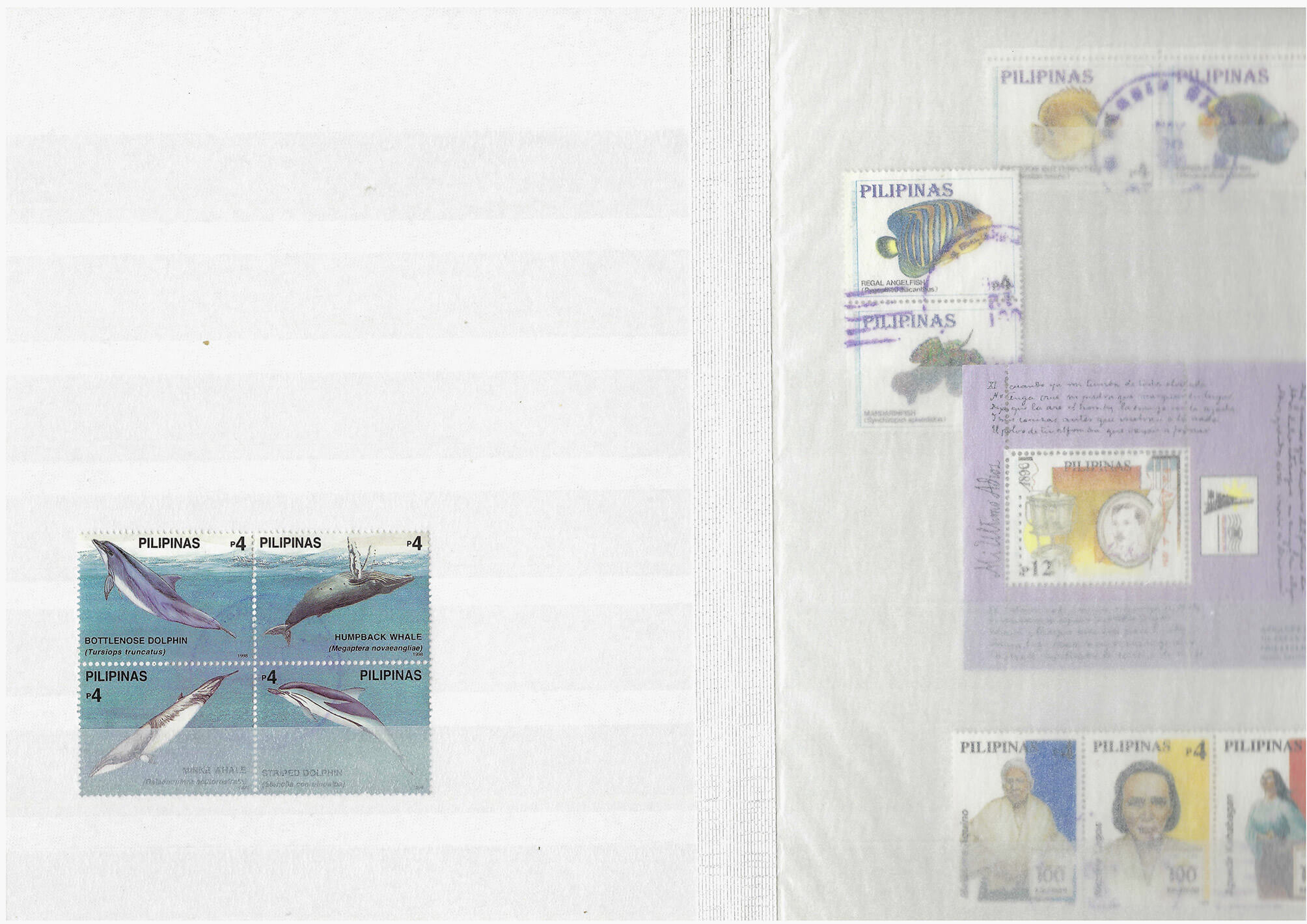What constitutes a ‘document’ and how does it function?
According to the Oxford English Dictionary, the etymological origin is the Latin ‘documentum’, meaning ‘lesson, proof, instance, specimen’. As a verb, it is ‘to prove or support (something) by documentary evidence’, and ‘to provide with documents’. The online version of the OED includes a draft addition, whereby a document (as a noun) is ‘a collection of data in digital form that is considered a single item and typically has a unique filename by which it can be stored, retrieved, or transmitted (as a file, a spreadsheet, or a graphic)’. The current use of the noun ‘document’ is defined as ‘something written, inscribed, etc., which furnishes evidence or information upon any subject, as a manuscript, title-deed, tomb-stone, coin, picture, etc.’ (emphasis added).
Both ‘something’ and that first ‘etc.’ leave ample room for discussion. A document doubts whether it functions as something unique, or as something reproducible. A passport is a document, but a flyer equally so. Moreover, there is a circular reasoning: to document is ‘to provide with documents’. Defining (the functioning of) a document most likely involves ideas of communication, information, evidence, inscriptions, and implies notions of objectivity and neutrality – but the document is neither reducible to one of them, nor is it equal to their sum. It is hard to pinpoint it, as it disperses into and is affected by other fields: it is intrinsically tied to the history of media and to important currents in literature, photography and art; it is linked to epistemic and power structures. However ubiquitous it is, as an often tangible thing in our environment, and as a concept, a document deranges.
the-documents.org continuously gathers documents and provides them with a short textual description, explanation,
or digression, written by multiple authors. In Paper Knowledge, Lisa Gitelman paraphrases ‘documentalist’ Suzanne Briet, stating that ‘an antelope running wild would not be a document, but an antelope taken into a zoo would be one, presumably because it would then be framed – or reframed – as an example, specimen, or instance’. The gathered files are all documents – if they weren’t before publication, they now are. That is what the-documents.org, irreversibly, does. It is a zoo turning an antelope into an ‘antelope’.
As you made your way through the collection,
the-documents.org tracked the entries you viewed.
It documented your path through the website.
As such, the time spent on the-documents.org turned
into this – a new document.
This document was compiled by ____ on 27.02.2024 12:14, printed on ____ and contains 17 documents on _ pages.
(https://the-documents.org/log/27-02-2024-5796/)
the-documents.org is a project created and edited by De Cleene De Cleene; design & development by atelier Haegeman Temmerman.
the-documents.org has been online since 23.05.2021.
- De Cleene De Cleene is Michiel De Cleene and Arnout De Cleene. Together they form a research group that focusses on novel ways of approaching the everyday, by artistic means and from a cultural and critical perspective.
www.decleenedecleene.be / info@decleenedecleene.be - This project was made possible with the support of the Flemish Government and KASK & Conservatorium, the school of arts of HOGENT and Howest. It is part of the research project Documenting Objects, financed by the HOGENT Arts Research Fund.
- Briet, S. Qu’est-ce que la documentation? Paris: Edit, 1951.
- Gitelman, L. Paper Knowledge. Toward a Media History of Documents.
Durham/ London: Duke University Press, 2014. - Oxford English Dictionary Online. Accessed on 13.05.2021.

July. Our eight-month-old son has a fever. We have a hard time getting him to drink enough. The tally marks on the back of a tortellini-box keep track of the diapers he wets and the millilitres of milk and electrolytes he’s able to hold down.
Stuck inside with worrying parents, a sticker-book about a farm is his brother’s favourite pass-time. Tired of having to go back and forth between the pastures and the sticker-filled sheets we decide to use my arm as a repository for animals that share a habitat.
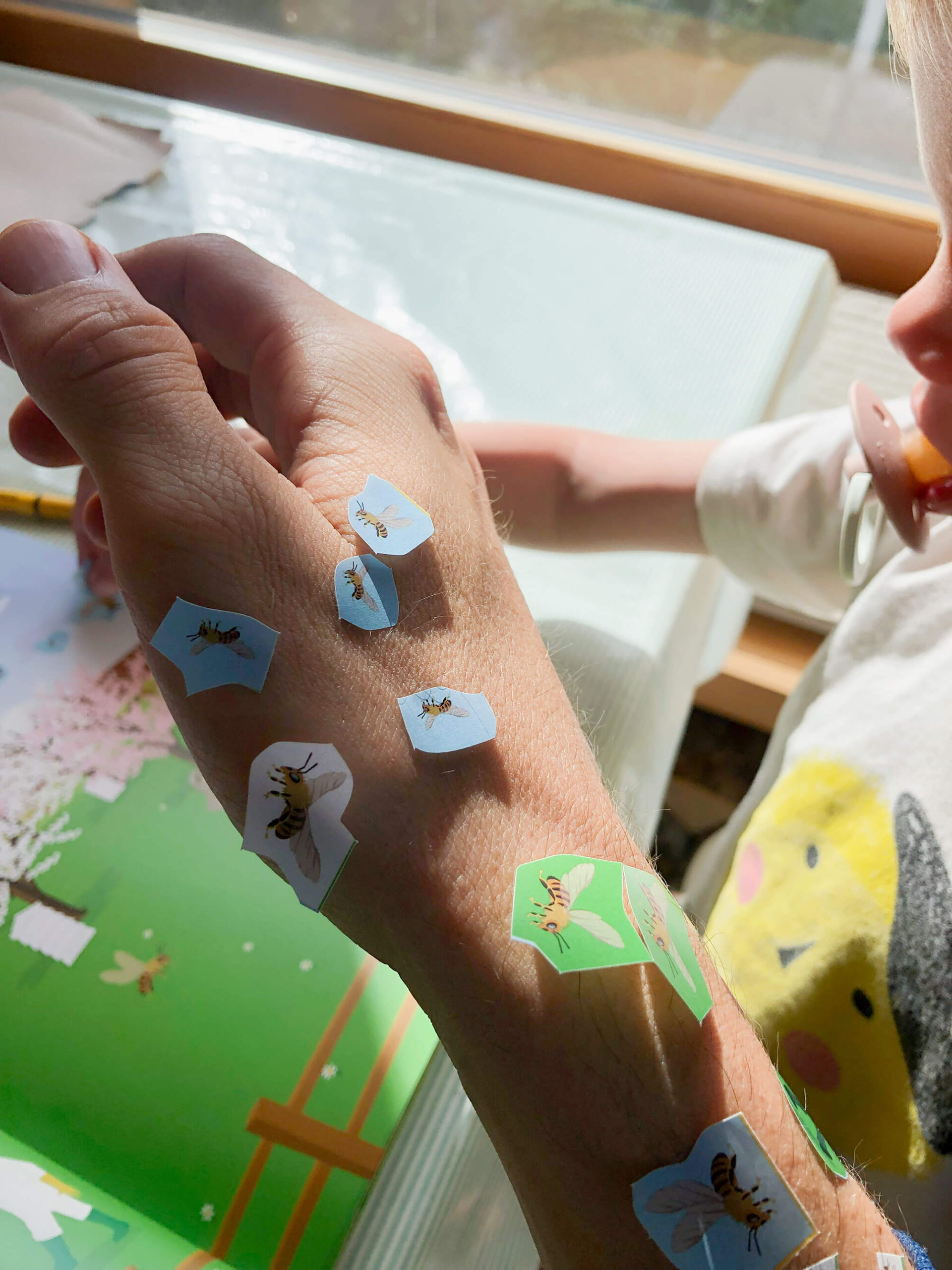
This stack of seaweed was offered by Henning, a farmer of the wonderful island of Laeso. This matriarchal pirate island, north of Denmark, is known for its tradition of building roofs from the seaweed growing in the surrounding salty water. Back in time, women would harvest and slowly weave the material around wooden beams from shipwrecks. This time-consuming process and technique of building shelters from what comes from the sea engaged the population in working together, building a ritual around each construction. Then those wild, yet full-of-care roofs, conserved in salt, would last for hundreds of years.
When I arrived on his land, Henning told me about how he restores those old beauties, weaving fresh seaweed around old beams and pressing the collected old material into insulation panels for new buildings. We talked about the clay of his land and how seaweed can become a material for ceramics in the process of making glazes.
Clementine Vaultier’s interests, although trained as a ceramist, are in the warm surroundings of the fire rather than the production it engenders.

At the beach of Cap d’Antifer in Normandy one can find ‘sea glass’ between the pebbles: pieces of broken glass that have naturally weathered by being tumbled by the ocean, over and over. Sharp edges and smooth surfaces vanish. The historical origin of the glass pebbles (glass bottles, a shipwreck) erodes. Only the colour of the pebbles gives an indication of their history, be it vaguely. Varieties of green sea glass are common, but other colours, such as red (Shlitz beer bottles) or yellow (interbellum Vaseline containers), are more rare and have to be sought after attentively.
It’s 4.15 PM. The tide is pushing three people towards the cliffs.

This stack of seaweed was offered by Henning, a farmer of the wonderful island of Laeso. This matriarchal pirate island, north of Denmark, is known for its tradition of building roofs from the seaweed growing in the surrounding salty water. Back in time, women would harvest and slowly weave the material around wooden beams from shipwrecks. This time-consuming process and technique of building shelters from what comes from the sea engaged the population in working together, building a ritual around each construction. Then those wild, yet full-of-care roofs, conserved in salt, would last for hundreds of years.
When I arrived on his land, Henning told me about how he restores those old beauties, weaving fresh seaweed around old beams and pressing the collected old material into insulation panels for new buildings. We talked about the clay of his land and how seaweed can become a material for ceramics in the process of making glazes.
Clementine Vaultier’s interests, although trained as a ceramist, are in the warm surroundings of the fire rather than the production it engenders.

The Cryptolaemus montrouzieri is commonly known as the mealybug destroyer. This species of ladybird gets its nickname from its capacity to battle mealybugs in plantations and greenhouses.
The website waarnemingen.be that gathers observations of plants and animals in Belgium lists multiple observations in the wild of the Cryptolaemus montrouzieri. The website explains that ‘in (northern) Europe, the species is widely traded and used in greenhouses and will regularly escape from them. But this ladybird cannot survive our winters (yet?). Sightings within the Benelux must therefore be entered into the register as “escape”. However, the species is already established in the Mediterranean area.’ (our translation)
The larvae have a waxy covering that makes them look like the mealybugs they prey upon, allowing them to avoid being correctly identified by the ones they are about to devour.
In an attempt to get rid of the mealybugs on my plants, I ordered 25 adult ladybirds. They were dead on arrival.
https://waarnemingen.be/species/600135/
https://waarnemingen.be/observation/244840499/
https://en.wikipedia.org/wiki/Aggressive_mimicry
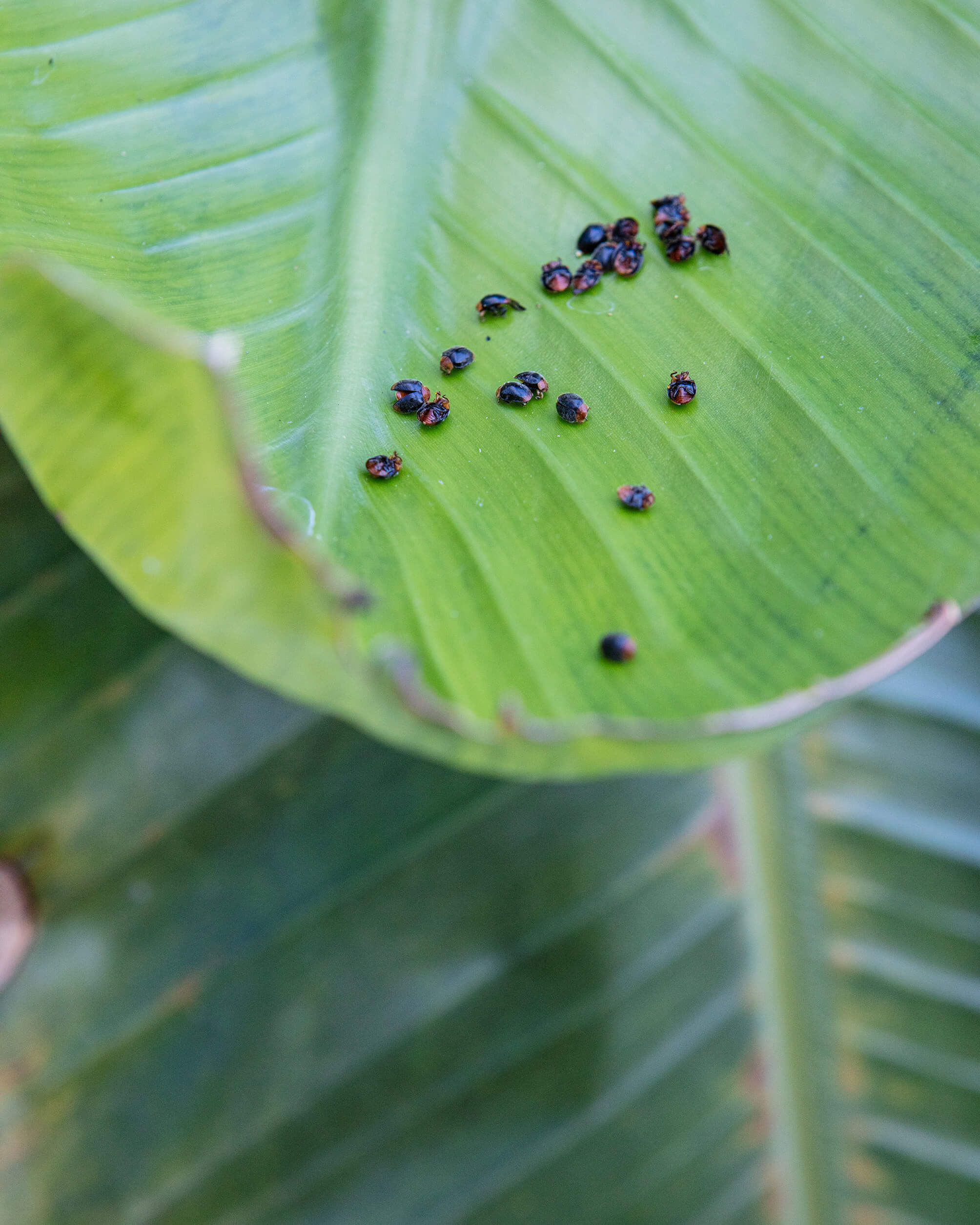
Belgium, approximately 1.5km from the French border, photograph made on 16.06.2018.
The European flag symbolises both the European Union and, more broadly, the identity and unity of Europe. It features a circle of 12 gold stars on a blue background. They stand for the ideals of unity, solidarity and harmony among the peoples of Europe. The number of stars has nothing to do with the number of member countries, though the circle is a symbol of unity.1
- Coat of arms of Gmina Puck, a rural district in Puck County, Pomeranian Voivodeship, in northern Poland.
- Illegible.
- F.C. Hansa, Mecklenburg, Pommern, FC Hansa Rostock is a German association football club based in the city of Rostock, Mecklenburg-Vorpommern. They have emerged as one of the most successful clubs from the former East Germany and have made several appearances in the top-flight Bundesliga. Hansa Rostock’s official anthem is “FC Hansa, wir lieben Dich total”. Hansa struggles with hooliganism, estimating up to 500 supporters to be leaning towards violence. The club’s logo consists of a red sailing ship with a blue sail showing the Rostock Griffin.
- Mon École Écologique.org is an organization for environmental conservation. On 07.01.2021 there was no website listed on this URL.
- Illegible.
- Illegible, apart from ’1962’ in the middle.
- Innocenti Bruderschaft, EL, 2018, a community of German Lambretta Innocenti riders and aficionados.
- Imag’Ink, Bretignolles Sur Mer, Tatoueur, 06 06 44 13 51, a French tattoo shop.
- Illegible.
- Hardly legible, the only word that can be made out is ‘Futbolom’: Russian for soccer.
- Kaluga on tour. Kaluga is a Russian city 150km southwest of Moscow. It is often called the cradle of space exploration thanks to the city’s most famous resident: Konstantin Tsiolkovsky.
- Hansa Ultras, F.C. Hansa. The Ultras are a group of F.C. Hansa fans (see: ‘3’).
- Illegible because ‘12’ was stuck over it.
- Illegible.
- La Hutoise is a regional student-association for higher education students from the Belgian town of Huy and its surroundings. Its aim is to bring together students from Huy in a spirit of camaraderie and to perpetuate student folklore. The logo consists of a two headed bird of prey with a cap on each head. The bird wears a scarf over one shoulder and holds a glass of beer in each paw.
- F.C. Hansa, Grimmen. The F.C. Hansa logo (see ‘3’ and ‘12’) is combined with the coat of arms of Grimmen: a griffin on a pile of 10 bricks. Grimmen is a German town in Nordvorpommern on the banks of the river Trebel.
- Illegible.
- Heil Hansa. To the left of this text the F.C. Hansa logo (see ‘3’, ‘12’ and ‘16’), on the right a logo consisting of a black bull with his tongue out and a golden crown on his head. This controversial sticker lead to several arrests in the run-up to the match between F.C. Hansa Rostock and Bayern München in February 2020. Supporters of F.C. Hansa had attached this sticker to public buildings on their way to the stadium.
- Illegible because ‘16’ was stuck over it.
- The Cuban flag.
- Illegible.
- Illegible.
- Kaluga (see ‘11’).
- De Veterinnen, a round, black sticker with a red print of a head wearing a round hat and a carnivalesque collar with a carrot for a nose. No further information found.
- Zlombol 11. Złombol is a yearly charity car rally racing event that starts in Katowice Poland. Contesters must drive a car that was built or designed during the communist era. The destination of the 2011 edition was Loch Ness.
- F.C. Hansa, Mecklenburg, Pommern, identical sticker to ‘3’, see also ‘12’, ‘16’, and ‘18’.
- Torpedo Moscow, only for white. Football club Torpedo Moscow is a Russian professional club based in Moscow, founded in 1930. Some fans of the club wave far-right symbols and banners, both during and outside of matches. Massive fan-protest ensued when the club tried to sign a black player in 2018. The player’s contract was cancelled.
- Heil Hansa. See ‘3’, ‘12’, ‘16’, ‘18’ and ‘26’.
- Illegible.
- Illegible.
- Illegible.
- Illegible.
- F.C. Hansa. Variation of ‘3’ and ‘26’ with a circle of yellow crops around the logo. See also ‘12’, ‘16’, ‘18’ and ‘28’.
- Live animals, contents: Rivne UA. These stickers are required by the International Air Transport Association for airline cargo pet travel. Rivne is a city in western Ukraine (UA) with an international airport. The sticker does not specify the transported animal but displays a dog, two birds, two fish and a turtle.
- Illegible.
- Illegible.
- Illegible.
- Illegible, apart from ‘lska’ on the bottom.
- Norrland Fly Guys, Reading Water. The sticker displays a minimal landscape with two pine trees, and a shed on a chunk of floating ice, a single four-point star shines in the sky. Norrland is the northernmost part of Sweden. No further information found. Whether the ‘fly guys’ own airplanes or are involved in fly fishing is unclear.
- This sticker displays – what appears to be – a smiling potato in front of an enlarged snow crystal. No further information found.
- Traumsucht is an artist collective from Berlin. Their website lists German rap-artists
- Illegible.
https://europa.eu/european-union/about-eu/symbols/flag_en
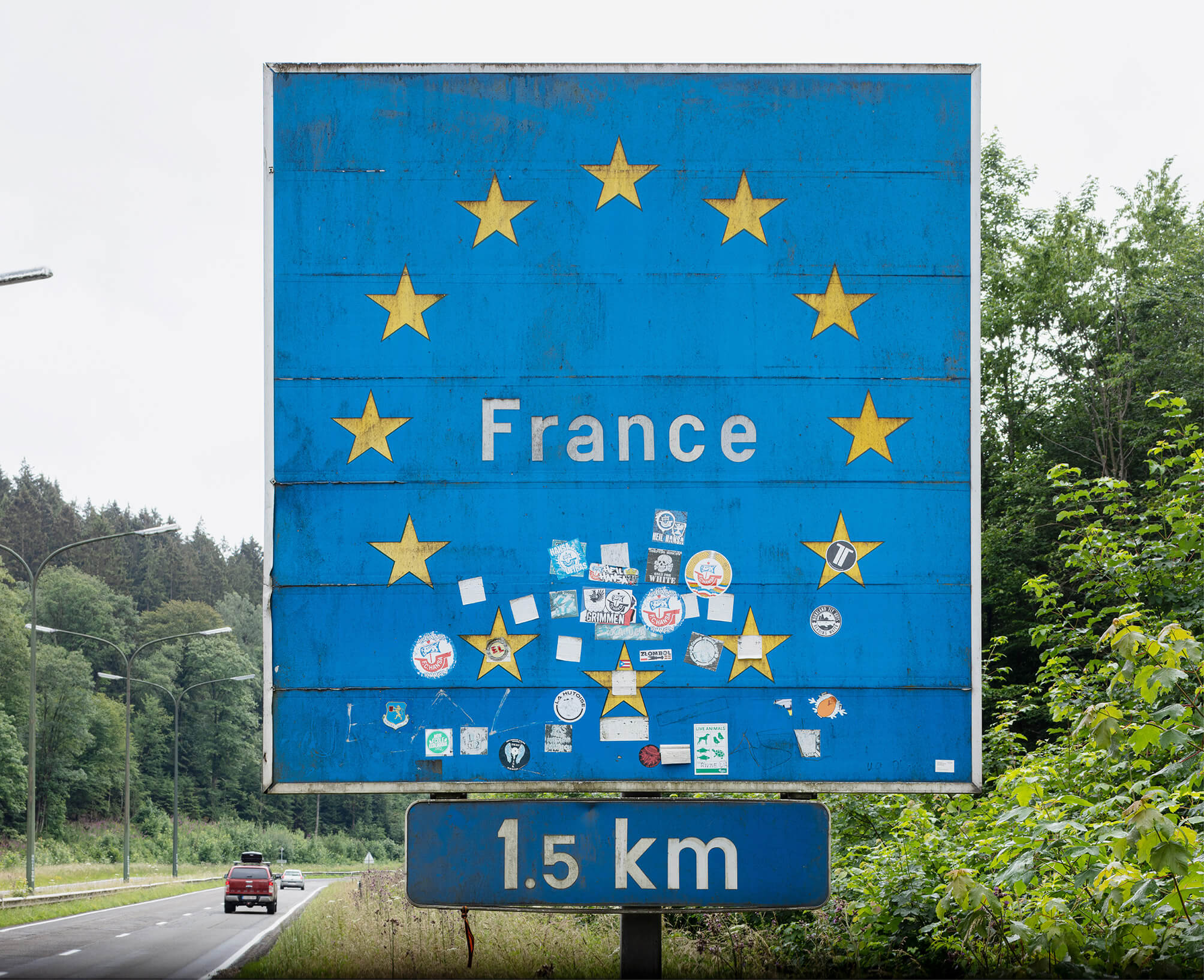
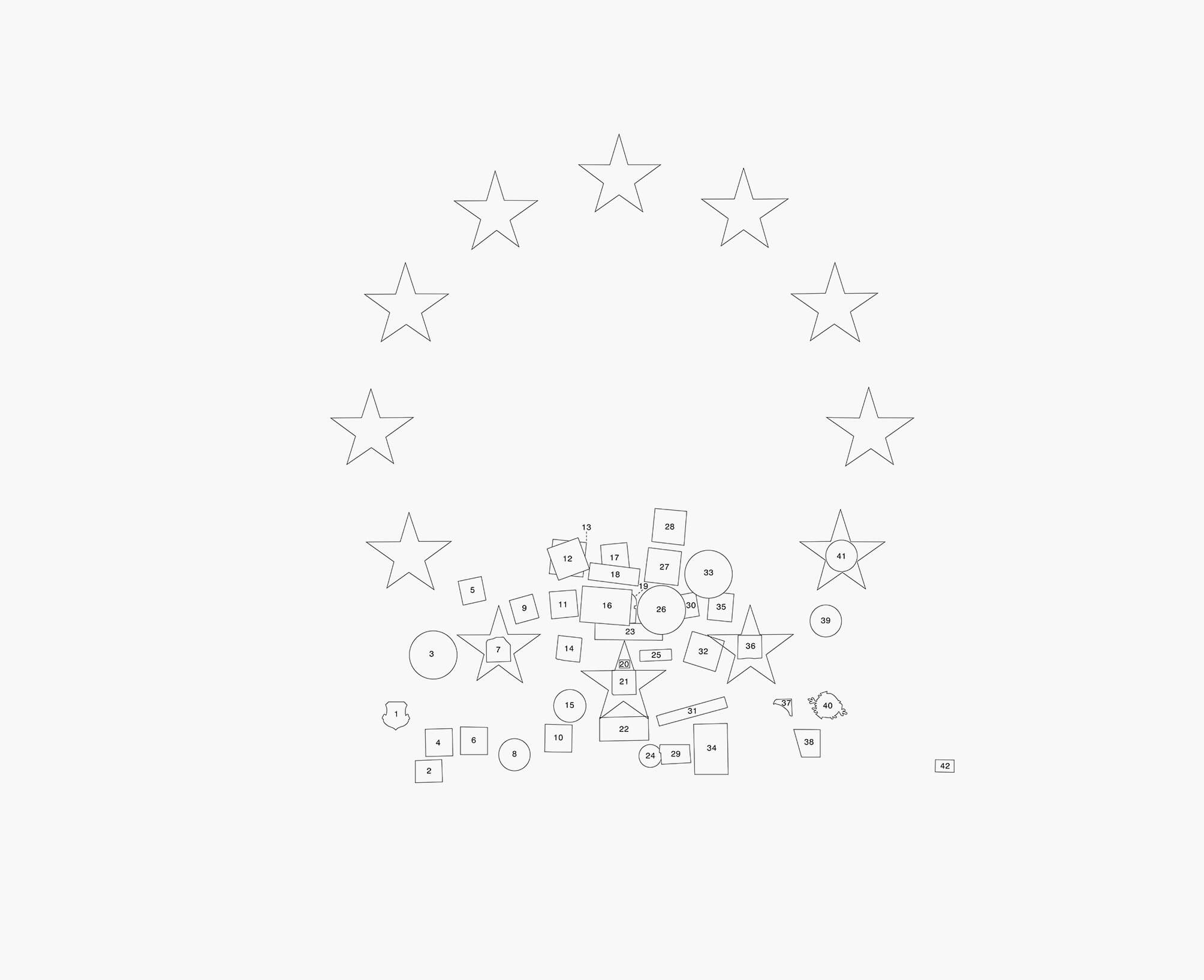
(‘Imaginary landscape in the actual greater Gent, some thousands of years ago. A grassy riparian zone separates rivers from the edge of the forests’)
Imagine a deserted city of Gent, overtaken by nature, Thiery asks the reader in his book Het woud (The Forest). After fifty years, you return to the city. Buildings have collapsed, streets are overgrown. It has become an impenetrable, dense forest, except for the river on which the reader makes his or her way through it. In the first half of the twentieth century, Leo Michel Thiery made one of Belgium’s first botanical gardens for educational purposes. In the middle of an industrialized quarter of the city of Gent, the garden presented different sceneries. There were landscapes from the Alps, dunes, the Ardennes, steppe. Besides sceneries with chalk-, loam-, marl- and sand-based vegetation, there were forests, grasslands and swamps.
After his death, Thiery’s garden decayed. Decades later, it was restored, with the Alps, dunes, the Ardennes and steppe now classified as a protected view.
Thiery, M. Het woud. Een proeve van plantenaardrijkskunde. Gent: De Garve, s.d., p. 14
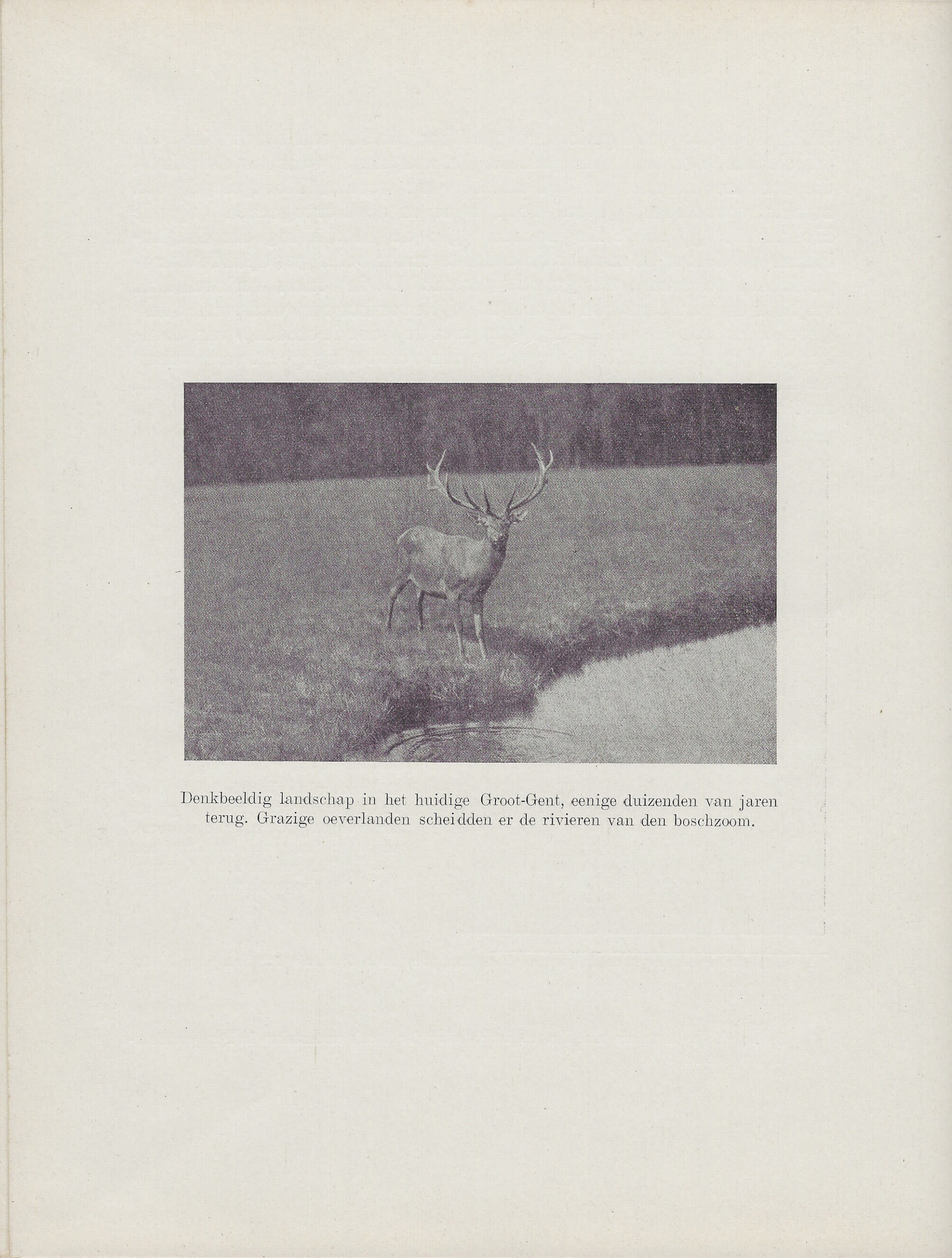
(‘Slice of more than three meters in diameter, sawn from a Mammoth-tree, given by California to the botanical garden of New York, and presented there’)
Thiery describes the ‘patriarchs’ of the plant world. This slice of a Sequoia, which fell in 1917 in Yosemite National Park, is 1694 years old. A woman of the New York Botanical Institue, where the slice of the patriarch is presented, counted the rings. If one would look at the picture with a magnifying glass, Thiery writes in a footnote, the reader (with good eyes and a fair amount of knowledge of the English language) would be able to read the labels indicating the important global events the tree witnessed. They are transcribed and translated by the author. The end of the Roman occupation of Great Britain. Columbus arriving in America. The Declaration of Independence. This is a lie: the text is illegible, even when using a magnifier.
In the photograph, the slice, as on view in the New York Botanical Institute, is presented upright. To prevent it from rolling away, two small triangular slices of wood were posited at the left and right side of the slice. The type of wood of these slices, nor the age of the patriarch from which they stem, are known.
Thiery, M. Het woud. Een proeve van plantenaardrijkskunde. Gent: De Garve, s.d., p. 59.

Between the rhinos and the kangaroos in the Antwerp Zoo a wooden footpath curves through a grove of Sequoiadendron Giganteum trees. In the middle of this Californian forest, visitors find the giant slice of a felled tree of the same species. It was brought to the zoo in 1962 and was approximately 650 years old at the time. Eleven labels point out significant moments in history on the tree’s growth rings. They range from zoo- and zoology-related moments (for instance: ‘1901: The Okapi is described as a species’, or ‘1843: Foundation of the RZSA and opening of the Zoo’, or ‘1859: Darwin publishes The Origin of Species’, etc.), to cultural and historical milestones (‘1555: Plantijn starts publishing books in Antwerp’, or ‘1640: Rubens (baroque painter) dies’, or ‘1492: Columbus in America’). Another label points to the last growth ring and reads: ‘1962: this tree is felled and this tree disc is installed at the Zoo.’
The label pointing to the centre of the tree implies a simultaneity between the tree’s first growth year and the Battle of the Golden Spurs in 1302.
On closer inspection the slice seems to consist of two halves that were put together like a jigsaw puzzle. The resulting gap is skilfully patched with what appears to be wood from the same species – possibly even the same mammoth tree.

A mostly empty book designed to collect cigar bands. The bands are glued to the paper at their left side, so the information on the backside, explaining the image and referring to the series it belongs to and the number of different labels the series contains, can be looked up. The book has complete and incomplete series on Christopher Columbus (complete), tanks (incomplete), the origins of civilization (complete), Ancient cultures (incomplete), fashion (complete), South-American sculptures (complete), Ancient columns (incomplete), Nobel Prize Winners (incomplete), an unclarified series of seven men, most of whom are ‘prof.’ or ‘dr.’(complete / incomplete), design plates (incomplete), famous Belgians (complete / incomplete), statesmen (incomplete) and football players (incomplete). The first page in the book is used to present two series. The left column presents the Egyptian dynasty (incomplete). The middle and right column present a series of bands by the brand Jubilé on the history of energy in telling scenes and pieces of machinery.
Series: Energy
Middle column, top to bottom:
- The writing telegraph. Hughes
- Experiment with a sulphur globe. William Gilbert
- Primitive telephone. Philipp Reis
- Wireless telegraph.1 Guglielo [sic] Marconi
- The arc of Volta. Sir Humphry Davy
- Fire in the wagon. Thomas Alva Edison
- Experiments with lightning. Benjamin Franklin
- Cathode for creating X-Rays. Wilhelm Röntgen
- Rotating magnetic field. Galileo Ferraris
Right column, top to bottom:
- Electric discharge. William Watt
- Magnetic telephone. Antonio Meucci
- Muscles reacting to electricity. Luigi Galvani
- Voltaic pile. Alessandro Volta
- Oscillating circuit. Guglielo [sic] Marconi
- Development of the telephone. Graham Bell
- Telephone, beginning of the 20th century
- Next to his wireless telegraph. Guglielo [sic] Marconi
- Invention of the incandescent light bulb. Thomas Alva Edison
- Morse’s telegraph. Samuel Morse
The series is incomplete.2
The scene shows a man standing at a desk, sticking out his hand to an officer in a window that reads, in mirror writing: Customs.
On eBay a complete series is advertised (15 EUR), with a lo-res picture of the whole collection, including the five bands missing in my grandfather’s collection. The information on the back, however, is not given. It leads to a highly speculative history of energy.
A man in a gown watching a T-shaped object.
A child in a cellar, sitting on a stool at a table with gray objects.
A soldier kneeling beside a child, in front of a train, and in front of a boat.
A low table with a giant cartwheel of sorts and a box.
A vertical object with what seems to be a bell on top.
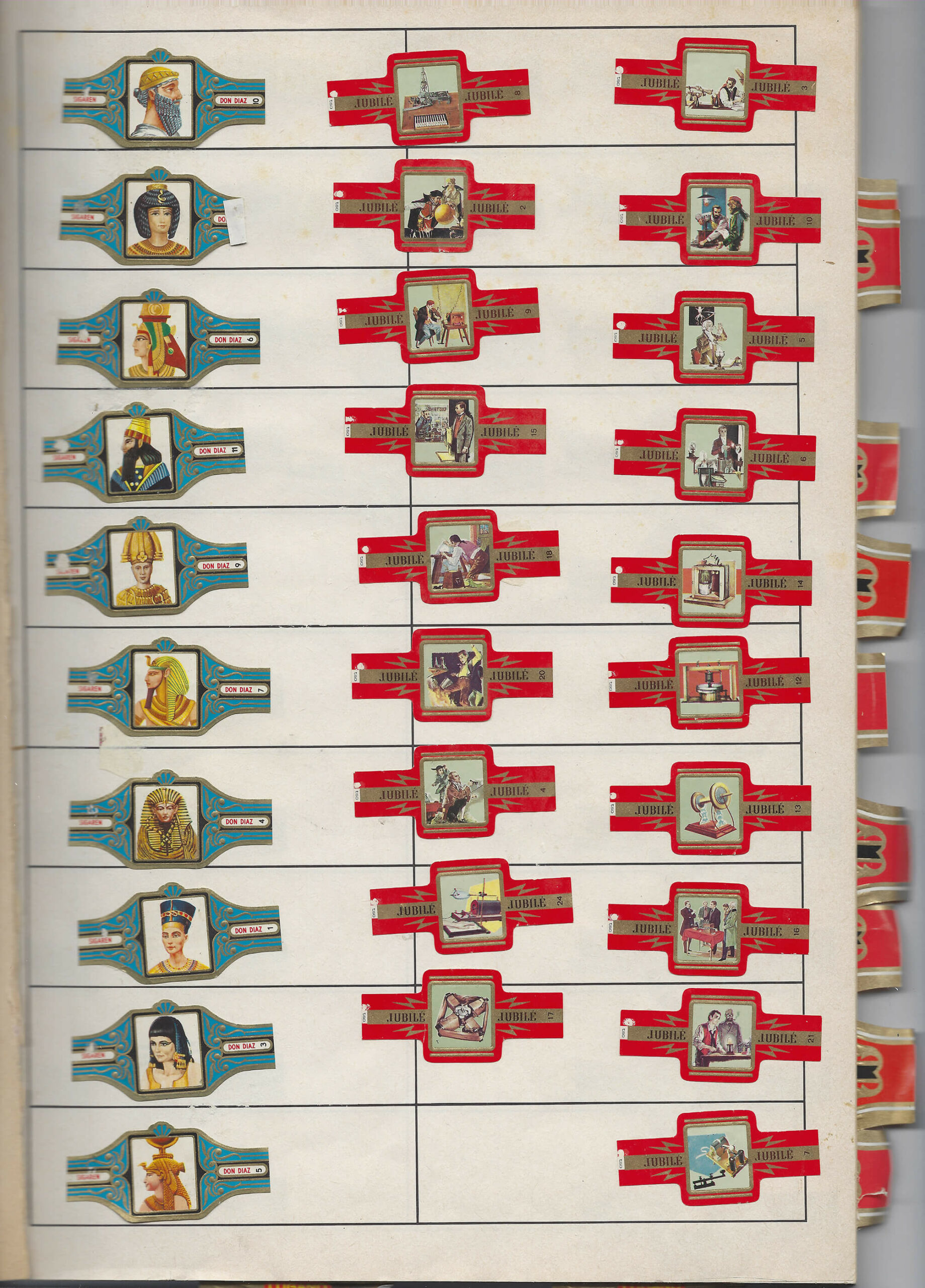
It’s 21:49 on Tuesday May 4th 2021. I’m sifting through the folders of a back-up drive. When I reach Archief2A/2017/wigny donder, the subfolder contains 103 items (97 DNG-files, 1 JPEG-file and 5 PSD-files). The photographs are all very similar. They show the silhouette of the same tree and hills, the red light of the telecommunications mast on the left and the orange glow of the street’s sodium lights. The thunderstorm moves from right to left. _44A3920 is the only exposure (10 seconds) that recorded lightning bolts.
I looked up heat lightning, also known as silent lightning, summer lightning, or dry lightning, which is simply cloud-to-ground lightning that occurs very far away, with thunder that dissipates before it reaches the observer. On YouTube I watched: Top 10 Dangerous Lightning Strikes Thunder recorded on Camera (HIGH VOLTAGE!!) followed by Lightning Strikes at the 2019 U.S. Women’s Open. It’s 22:07, I am doubtful at first but become convinced I can hear thunder afar.

When the juneberry (Amelanchier Lamarckii) flowers, the beekeeper knows it’s time to add a first honey super to the hive. Winter’s over and worker-foraging bees will fly out and come back with their stomachs full of nectar. To avoid larvae in the honey, the beekeeper will place a grid – the so-called queen excluder – between the main compartment of the hive and the honey super.

‘Submission for an art project named the-documents.org’ is a collection of 9 images1 generated by DALL·E mini2, an open-source AI model, on the basis of the prompt ‘Submission for an art project named the-documents.org’.
DALL·E mini is a freely available AI tool that generates images based on a description of the desired image (a prompt) provided by a user.
Though DALL·E mini seems to be primarily used as a source of humour within the online community – being able to create a set of images from any specific or abstract prompt – it also gives rise to more serious questions on AI ethics and copyright. As the model is trained with unfiltered data from the internet, it may reinforce societal biases, generating images that contain stereotypes against minority groups. DALL·E mini and similar, more advanced tools, are also capable of creating art ‘in the style of’ when they have sufficient data to source from (e.g. using a prompt as “Van Gogh painting the Eiffel Tower”). This leads to the legal and ethical question whether an artist should have a say in the use of his/her artwork as AI input data, and whether the artist should be able to claim rights for AI generated images based on this data.

DALL·E mini was created by Boris Dayma et al. 2021-2022, https://huggingface.co/spaces/dalle-mini/dalle-mini, to be migrated to www.craiyon.com
Ward Verwaeren is a legal counsel in the tech industry, and former IP lawyer. He tries to know more about art than the average lawyer, and more about law than the average artist.

On Mondays, before noon, I go to the supermarket with my two-year-old son. After passing the lasagnes, the loaves of bread and the fruit and vegetables, we make a short stop at the aquarium with the lobsters. Around New Year, there are two of them.
After we’ve paid for the groceries and have put them in the car, we walk into the pet shop. We look at the parrots (Jacques, Louis and Marie-José), the rabbits, the guinea pigs, the assorted caged birds and the fish and turtles. He’s very fond of the Cyphotilapia Frontosa Burundi. He calls them zebras. They hail from Lake Tanganyika, the label says. It’s the second-oldest freshwater lake, the second-largest by volume and the second-deepest. The pet shop has adorned their aquarium with a scene of ocean waste.
In an effort to avert guilt, I look for something cheap and more or less useful to buy: birdseed, a snack for the neighbour’s cat, a comb for his grandparent’s Labrador, etc.
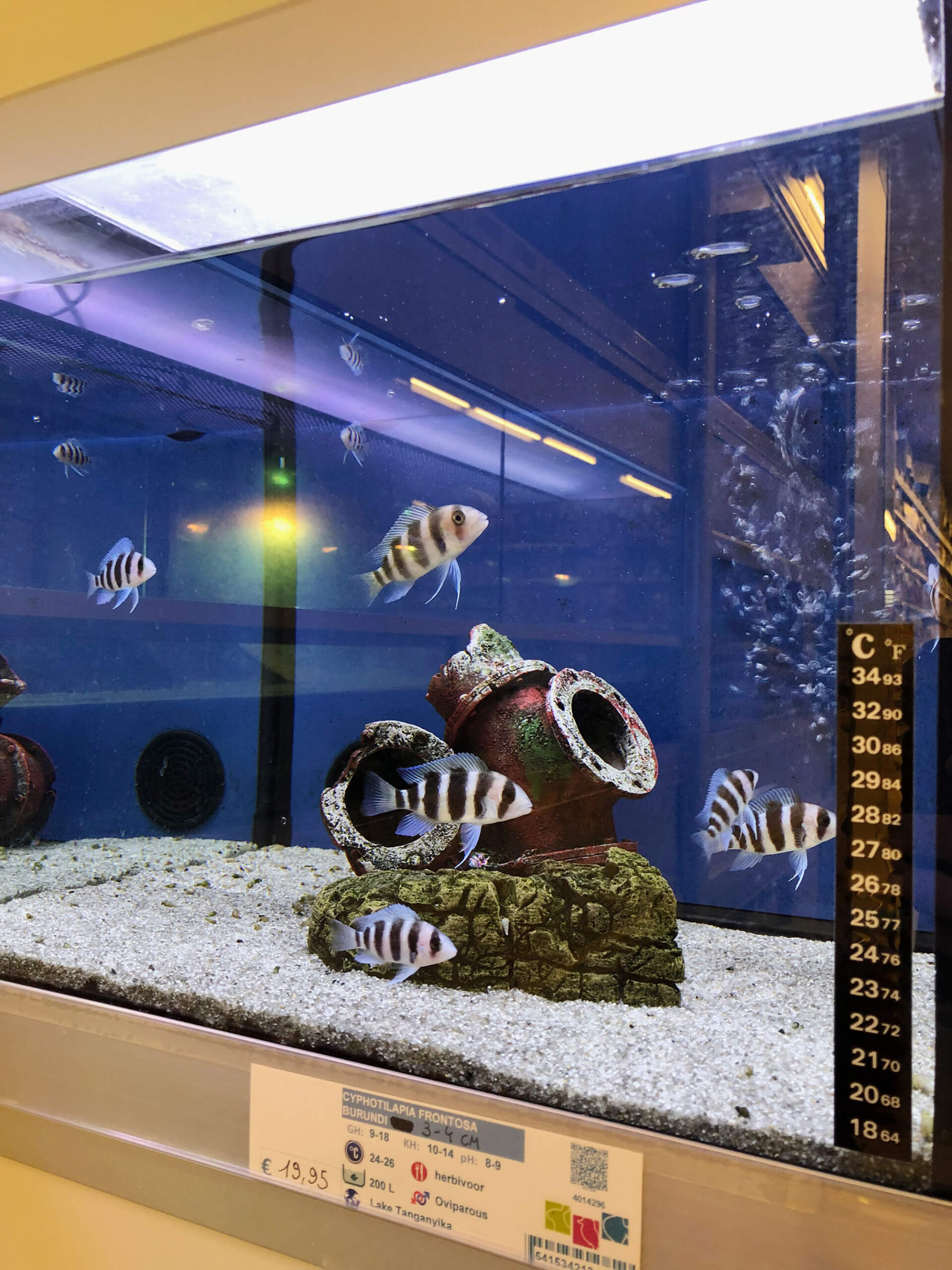
The GPS-plotter displays the ship near Keyhaven Lake, indefinitely. The sea appears calm, the horizon is level from one perspective.
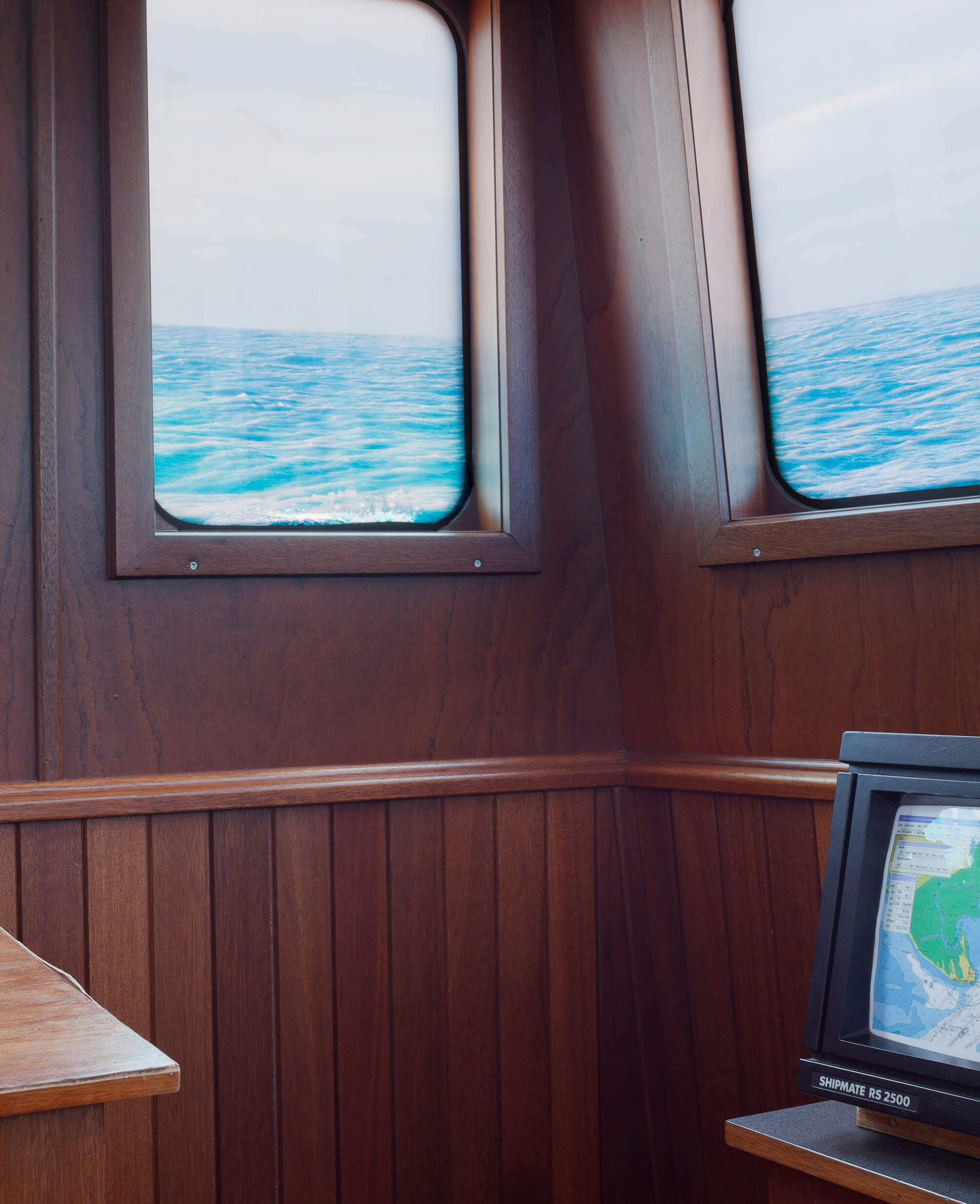
At the nuclear waste processing facility. While the photographer and the head of the communication department are making their way from the processing building to the temporary storage building, they walk past the central chimney.
‘On the highest of the accessible levels of the chimney, operators were finding small steel rings. They gathered them, but soon noticed that new rings were added. At a certain point at a rate of one ring a day.
[…]
It took them some time to realize what they were, so they started collecting them by slipping them onto a piece of rope. By now the rings on the rope span about this distance [spreads his arms to indicate a distance of about 1.2m].
[…]
They turned out to be rings that came from pigeon’s legs.
[…]
On top of our chimney resides a peregrine falcon.
[…]
I was told pigeon fanciers have a tendency to give a peregrine falcon – or any other bird of prey in their area – a hand at disappearing, but this one took up residency in the internal perimeter, where – as you know – access is severely restricted.’
First published in: De Cleene, M. Reference Guide. Amsterdam: Roma Publications, 2019
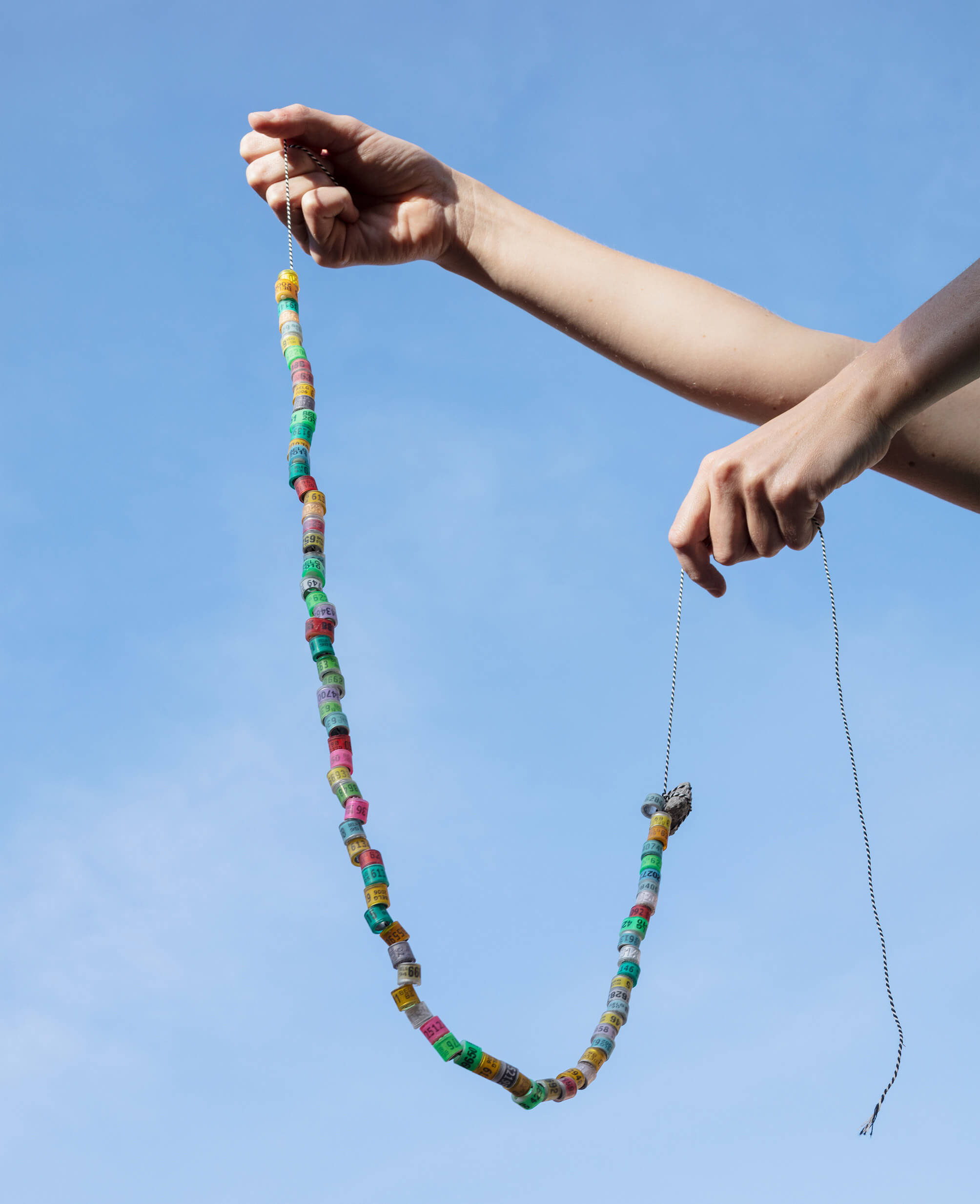
Because an acquaintance of the family was a missionary, the postage stamp collection had a large quantity of stamps from the Philippines. You had to boil water, hold the empty envelope above it, wait until the glue and the missionary’s saliva loosened and evaporated, and then gently peel off the stamp. Then, it was put on a piece of pink blotting paper. Once dry, the stamp was slid into a tailor-made booklet.
Between a Horta building’s facade and King Baudouin’s portrait, there are exotic fish, religious scenes, butterflies, and advertisements for NGOs.
Mango is the Philippines’ national fruit. Pope John Paul II visited it in 1995. There was a guerrilla unit in Northwest Pampanga during WWII.
